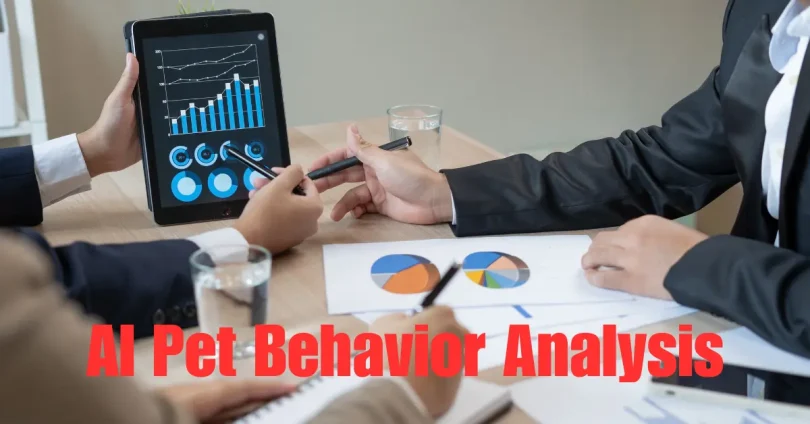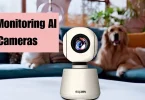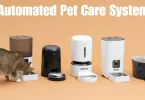The way we care for our pets is rapidly evolving, thanks to breakthroughs in artificial intelligence. AI pet behavior analysis is one of the most transformative innovations in this space, helping pet owners, veterinarians, and trainers gain deeper insights into the emotional and physical well-being of animals. This technology deciphers behavioral patterns through data, offering real-time insights that were previously inaccessible without constant human observation.
In this article, we’ll explore everything about AI pet behavior analysis—from how it works and its key benefits to challenges and the future of AI in pet care.
What is AI Pet Behavior Analysis?
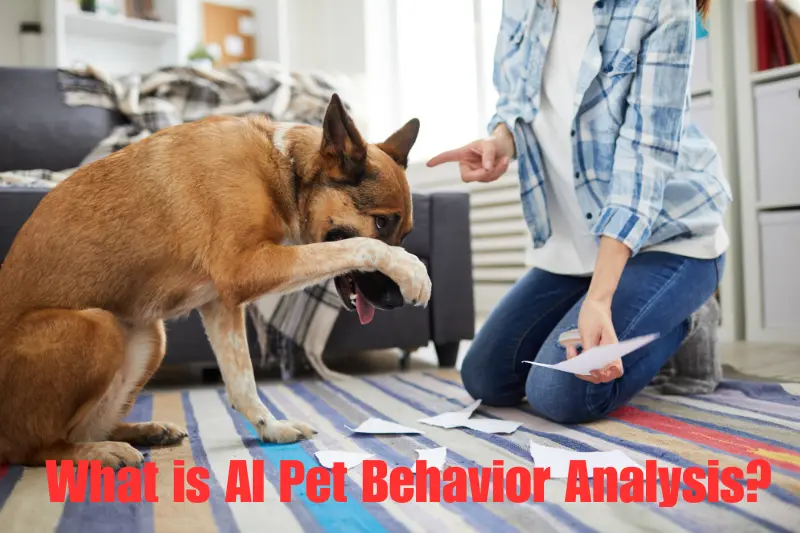
AI pet behavior analysis is the process of using artificial intelligence technologies to monitor, understand, and predict the behavior of pets such as dogs, cats, and other domestic animals. This system typically involves data collection through sensors, cameras, microphones, and wearable devices, which is then analyzed using AI models to detect patterns, anomalies, and emotional cues.
The goal is to identify not just what a pet is doing (e.g., barking, sleeping, scratching) but also why they are doing it. This makes it easier to understand their health, emotional state, and general well-being.
How Does AI Pet Behavior Analysis Work?
AI pet behavior analysis follows a step-by-step approach combining various AI technologies:
1. Data Collection
The system gathers data from multiple sources, such as:
- Video cameras: Installed around the home to capture the pet’s movements and actions.
- Microphones: Used to pick up vocalizations like barking, meowing, or whining.
- Wearables: Smart collars and tags equipped with accelerometers, GPS, and heart rate sensors.
- Environmental sensors: To track temperature, humidity, and the pet’s surrounding conditions.
2. Preprocessing and Filtering
The collected data is cleaned and filtered to remove background noise or irrelevant information. This ensures the AI focuses only on behavior-specific signals.
3. Behavior Recognition via AI Models
Once the data is processed, advanced AI techniques like:
- Computer Vision (for visual data),
- Natural Language Processing (for vocalizations), and
- Machine Learning (for behavioral prediction)
…are used to recognize patterns in the data. These patterns are compared against pre-trained models to classify behaviors like:
- Eating
- Sleeping
- Barking excessively
- Pacing or restlessness
- Aggression
- Withdrawal or hiding
You may also like to read this:
AI Technology For Pets: Benefits And Latest Trends 2025
Top Benefits Of Automated Pet Care Systems For Busy Owners
Best Robotic Pet Toys For Dogs And Cats In 2025 Guide
Top 10 Best Dog Tech Gadgets for 2025 | High-Tech Pets
Top Smart Collars For Dogs with GPS & Health Tracking
Best Dog GPS Trackers Online For Safety & Real-Time Tracking
Best Tech Toys for Dogs: Best Interactive Gadgets For Pets
4. Behavior Interpretation and Alerts
Once a behavior is classified, the system interprets its meaning—e.g., excessive barking could indicate anxiety, while frequent scratching may hint at a skin condition. The AI sends alerts or updates to the pet owner through a connected app or dashboard.
Applications of AI in Pet Behavior Analysis
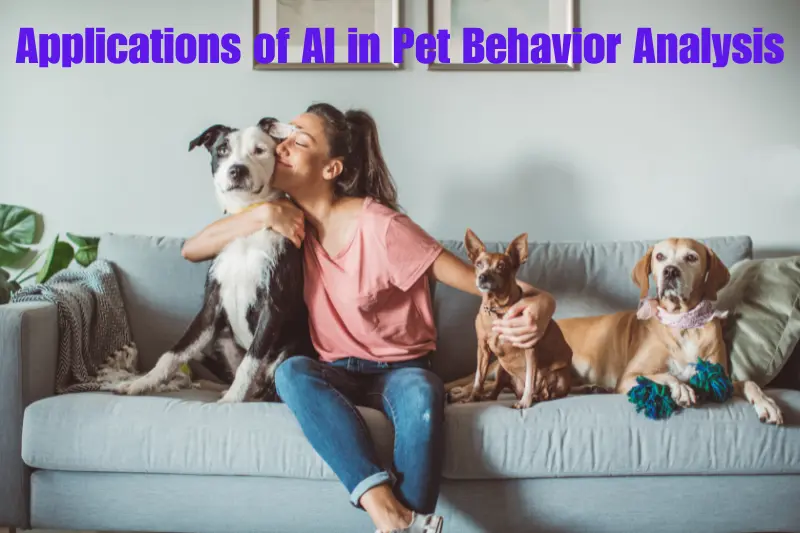
AI-powered pet behavior analysis is transforming various areas of pet care:
1. Health Monitoring
- Detect signs of illness or discomfort early, such as limping, vomiting, or reduced activity.
- Monitor chronic conditions like arthritis or epilepsy through behavior patterns.
- Track post-surgery recovery progress.
2. Emotional Monitoring
- Recognize emotional states like stress, excitement, fear, or sadness.
- Understand the impact of changes in routine, environment, or social interactions.
- Identify symptoms of separation anxiety when owners leave home.
3. Training and Behavioral Modification
- Pinpoint specific problematic behaviors (biting, howling, aggression).
- Offer training suggestions based on pet behavior.
- Evaluate progress in obedience training programs.
4. Lifestyle & Fitness Tracking
- Monitor activity levels, calorie expenditure, and sleep quality.
- Compare actual activity against breed-specific needs.
- Encourage healthier routines through recommendations.
5. Pet Safety and Environmental Monitoring
- Alert owners when a pet enters unsafe areas (kitchen, poolside).
- Detect excessive barking that might disturb neighbors.
- Use GPS to track pets if they escape or wander off.
Technologies Behind AI Pet Behavior Analysis
Several core technologies power this capability:
Machine Learning (ML)
- Trains models on large datasets of pet behavior.
- Learns from new behaviors over time for personalized insights.
Computer Vision
- Uses video footage to analyze movements, posture, and expressions.
- Identifies patterns like tail-wagging, stretching, limping, or restlessness.
Natural Language Processing (NLP)
- Interprets the meaning behind vocal sounds like barking or whining.
- Detects stress levels based on tone and frequency.
Internet of Things (IoT)
- Connects smart collars, feeders, cameras, and home sensors.
- Sends real-time updates and integrates with mobile apps.
Edge Computing
- Processes data locally on devices, reducing lag and enhancing privacy.
- Enables fast, real-time behavior monitoring.
Benefits of AI Pet Behavior Analysis
The integration of AI into pet care brings numerous advantages:
✅ Early Illness Detection
Helps detect diseases or discomfort before symptoms become severe, leading to timely vet intervention.
✅ Enhanced Understanding of Emotions
Allows owners to emotionally connect with pets by understanding their moods and reactions.
✅ Reduced Anxiety for Pet Owners
Provides peace of mind when pets are home alone by offering real-time behavior updates.
✅ Customized Pet Care Plans
Recommends diet, exercise, and medical attention tailored to the pet’s behavior and lifestyle.
✅ Cost Savings
Prevents expensive veterinary treatments by catching health issues early.
Real-World Devices & Examples
Several companies and startups are already applying AI pet behavior analysis:
- Petcube: Smart pet cameras that use AI to detect abnormal activity and alert owners.
- Whistle Go Explore: A wearable pet tracker analyzing activity and location.
- Animo by Sure Petcare: Monitors behavior changes and provides health alerts.
- Felcana: Integrates vet analytics and wearables for a complete health picture.
- Vetrax: A collar-based solution for behavior and health tracking.
Challenges and Limitations
Despite its potential, AI pet behavior analysis faces a few hurdles:
⚠️ High Cost of Devices
Smart collars, cameras, and AI-enabled services can be expensive for average pet owners.
⚠️ Data Privacy Concerns
Continuous monitoring raises privacy issues, especially with video and audio recordings.
⚠️ Behavioral Variability
Different breeds, personalities, and environments can make behavior interpretation tricky.
⚠️ False Positives/Negatives
AI might misinterpret normal behavior as problematic (e.g., barking during play mistaken as anxiety).
⚠️ Limited Support for Exotic Pets
Most current solutions focus on dogs and cats, leaving out birds, reptiles, or small mammals.
The Future of AI in Pet Behavior Analysis
The future of AI in pet care looks incredibly promising, with emerging innovations such as:
🔹 Emotion Translation Apps
Development of apps that translate vocalizations and body language into human-readable emotions.
🔹 Behavior-Based Smart Homes
Integration with smart homes to adjust temperature, lighting, or music based on a pet’s mood.
🔹 Personalized AI Models
AI that adapts specifically to the pet’s individual behavior over time, providing hyper-personalized insights.
🔹 Veterinary AI Integrations
Combining real-time behavioral data with AI-driven diagnostics for comprehensive pet health profiles.
🔹 Multispecies Support
AI systems that recognize behavior across different species, from dogs and cats to birds, hamsters, and reptiles.
Integration with Smart Ecosystems
As smart homes become more common, AI pet behavior analysis is being integrated with broader smart ecosystems. This offers a holistic approach to home automation and pet care.
🔸 Smart Home Integration
AI systems can communicate with smart home devices to:
- Adjust lighting or temperature based on your pet’s comfort.
- Play calming music if the AI detects signs of stress or anxiety.
- Lock or unlock pet doors based on behavior and location.
🔸 Feeding and Nutrition Control
Smart feeders can be programmed to dispense the right amount of food at the right time based on activity levels and dietary needs analyzed by AI.
🔸 Interactive Toys and Companions
Some systems link to AI-powered toys that respond to your pet’s mood, ensuring mental stimulation and reducing boredom.
Ethical Considerations
While AI pet behavior analysis holds immense potential, it’s important to consider the ethical implications of its widespread use.
🟤 Data Privacy
- Just like human surveillance, constant monitoring of pets may raise ethical questions about data collection, especially in shared households.
- Owners should ensure that data is securely stored and not misused by third parties.
🟤 Animal Autonomy
- Over-reliance on AI to control every aspect of a pet’s environment might reduce the pet’s freedom or natural behavior.
- Balance is essential: technology should aid, not dominate, a pet’s life.
🟤 Bias in AI Models
- Many AI systems are trained primarily on data from common pet breeds and environments.
- This can lead to inaccurate analysis for less-studied breeds or animals with unique behavioral traits.
Expert Opinions and Industry Insights
🗣️ Veterinary Perspective
“AI pet behavior analysis can act as an early-warning system for vets. When integrated with clinical tools, it enables more precise and preventative healthcare.”
— Dr. Emily Rhodes, DVM
🗣️ Animal Behaviorists
“Behavioral AI is a great addition, but it must be validated by a human expert. AI can spot patterns, but it can’t replace years of observational experience.”
— Sarah Linden, Certified Animal Behaviorist
🗣️ Tech Innovators
“We’re heading towards a future where your dog’s collar can tell you how it feels—and that’s not science fiction. It’s happening now.”
— Alex Kumar, CEO of PetTech AI
Tips for Choosing an AI Pet Behavior System
If you’re considering investing in this technology, here are some helpful tips:
✔️ Compatibility
- Choose systems compatible with your smartphone, smart home, or veterinary software.
✔️ Pet-Specific Features
- Ensure the system supports your pet’s species, breed, and specific needs.
✔️ Accuracy & Reviews
- Look for products that have been tested in real-world environments and offer high accuracy ratings.
✔️ Customer Support
- Opt for brands with strong customer service, regular software updates, and educational resources.
✔️ Data Transparency
- Understand where and how your data is stored. Choose companies with clear privacy policies.
Conclusion
AI pet behavior analysis is not just a futuristic concept—it’s a present-day innovation reshaping how we care for our animal companions. By combining technologies like machine learning, computer vision, and IoT, these systems offer a powerful way to understand pets on a deeper emotional and physical level. From detecting early signs of illness to monitoring stress and behavior patterns, AI empowers pet owners, veterinarians, and trainers to make more informed, compassionate decisions.
Despite challenges like cost, privacy concerns, and variability in animal behavior, the technology continues to evolve. As more devices become affordable and AI models more personalized, we can expect even broader adoption across households and veterinary practices. With ethical implementation and human oversight, AI pet behavior analysis has the potential to dramatically enhance the quality of life for both pets and their owners—ushering in a smarter, more empathetic era of pet care.
FAQs
1. What is AI pet behavior analysis?
AI pet behavior analysis is the use of artificial intelligence to monitor, understand, and interpret the behaviors and emotions of pets. It involves collecting data from cameras, microphones, and wearable sensors to analyze movement, vocalizations, and routines.
2. How does AI detect my pet’s emotions or health issues?
AI uses machine learning and data analytics to identify behavioral patterns such as changes in activity, vocalizations, or posture. These patterns are compared with known signs of stress, anxiety, illness, or injury to generate alerts or suggestions.
3. Is this technology safe for my pet?
Yes. Most AI systems use non-invasive sensors and smart devices like collars or cameras that do not harm your pet. The technology is designed to enhance safety and well-being.
4. Can AI behavior analysis replace a veterinarian?
No. AI is a support tool that helps detect potential problems early and provides insights. However, it cannot replace professional veterinary diagnosis and treatment. It should be used alongside regular vet check-ups.
5. What kinds of pets can use AI behavior systems?
Currently, most systems are optimized for dogs and cats. However, as technology advances, support for other animals like birds, rabbits, and reptiles is gradually being developed.

